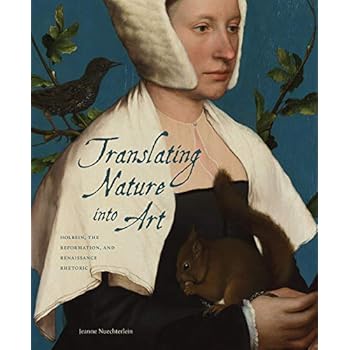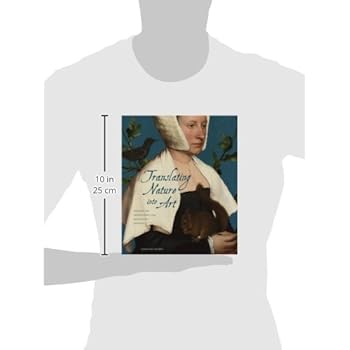Translating Nature into Art: Holbein, the Reformation, and Renaissance Rhetoric
Category: Books,Arts & Photography,History & Criticism
Translating Nature into Art: Holbein, the Reformation, and Renaissance Rhetoric Details
Review “Amid a host of recent German-language monographs and exhibitions on Hans Holbein, most of the material facts about the artist have been established and reexamined. But this new study by Jeanne Nuechterlein steps back to consider—within their singular, defined historical contexts—what art historians now term the visuality of the artist’s works. She finds two major, contrasting approaches in his picturing: a symbolic yet gestural allegorical vocabulary for religious imagery, versus a sober, detached documentation chiefly focused on his portrait sitters. Buffeted by the politics and iconoclasm of the Reformation in both Switzerland and England, Holbein engaged the visible world as well as the problem of representation itself, including in unique early religious works such as his Dead Christ in the Tomb, which invested even material representation with meaning. Like Bryan Wolf in his assessment of Vermeer’s visual modernity, Nuechterlein explores just what her title declares—how across the course of his tumultuous career Holbein translated nature into art, pioneering in his distinctive fashion a vision of picturing that fortified European painting for centuries to come.”—Larry Silver, University of Pennsylvania“Translating Nature into Art is a fascinating case study of the long-standing debate about the relationship between naturalism and meaning, between appearance and essence, in art. It is not casual reading, but diligence will be rewarded with a better understanding not just of Hans Holbein but of all art.”—R. K. Dickson, The Bloomsbury Review“Nuechterlein rewards her readers with wonderfully sensitive observations about Holbein's art and his possible intentions. Translating Nature into Art is richly rewarding. Nuechterlein proposes a method for understanding Holbein's stylistic decisions and their theoretical underpinnings. . . . Nuechterlein's exercise in careful study of a limited number of works yields stimulating new insights. For this reader, the book makes Holbein the artist both more human and more interesting.”—Jeffrey Chipps Smith, Visual Resources: An International Journal of Documentation“In this subtle, original and admirably clearly written book Nuechterlein explores both the nuances of Holbein’s visual language and the German and Latin constructions used in the writings of his contemporaries, at the same time placing the artist’s work at the heart of contemporary debates on the use of images.”—Susan Foister, Burlington Magazine“[Nuechterlein’s] arguments throughout are fresh, insightful, thoroughly researched, and persuasively and eloquently set forth. Sixteenth-century scholars, both in the field of art history and beyond, will find rich stimulation in this welcome new work.”—Bobbi Dykema, Sixteenth Century Journal Read more About the Author Jeanne Nuechterlein is Senior Lecturer of History of Art at the University of York. Read more

Reviews



